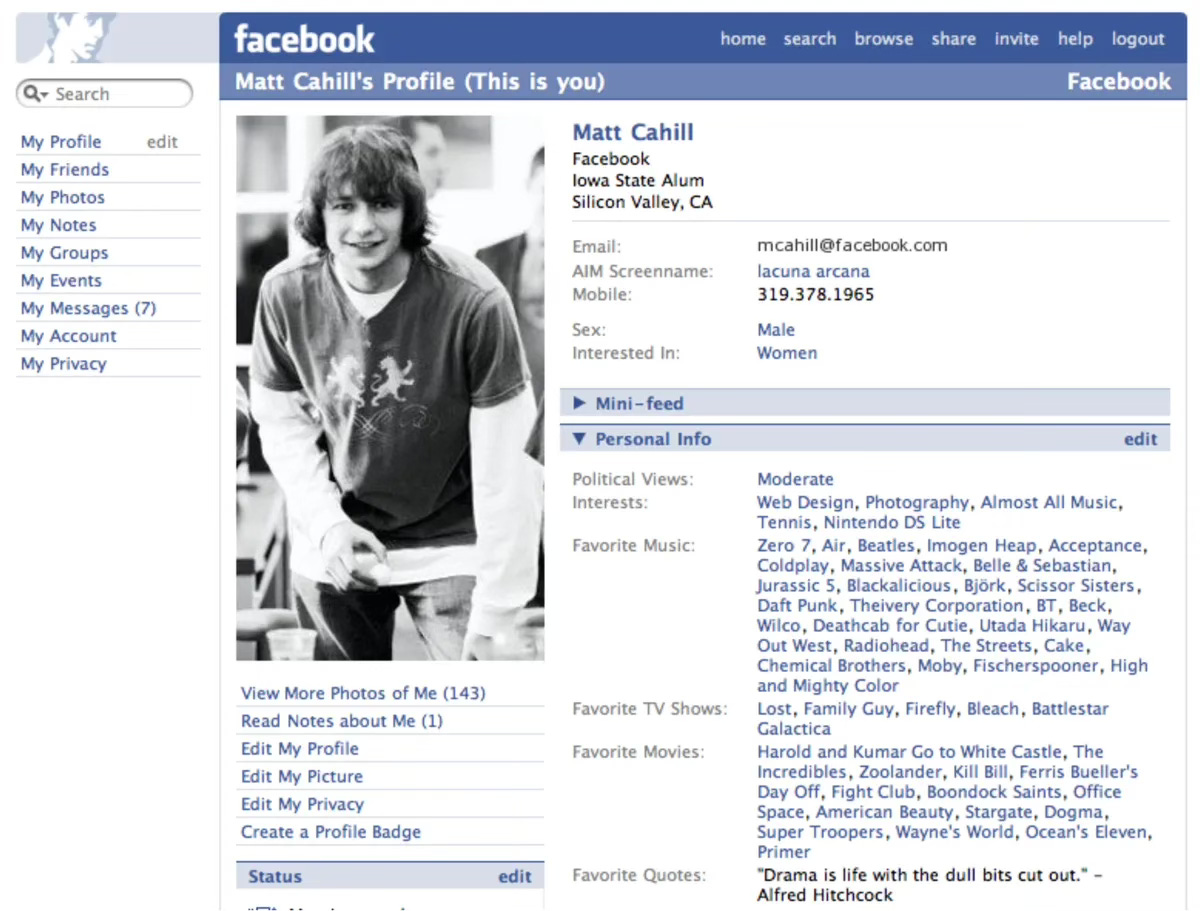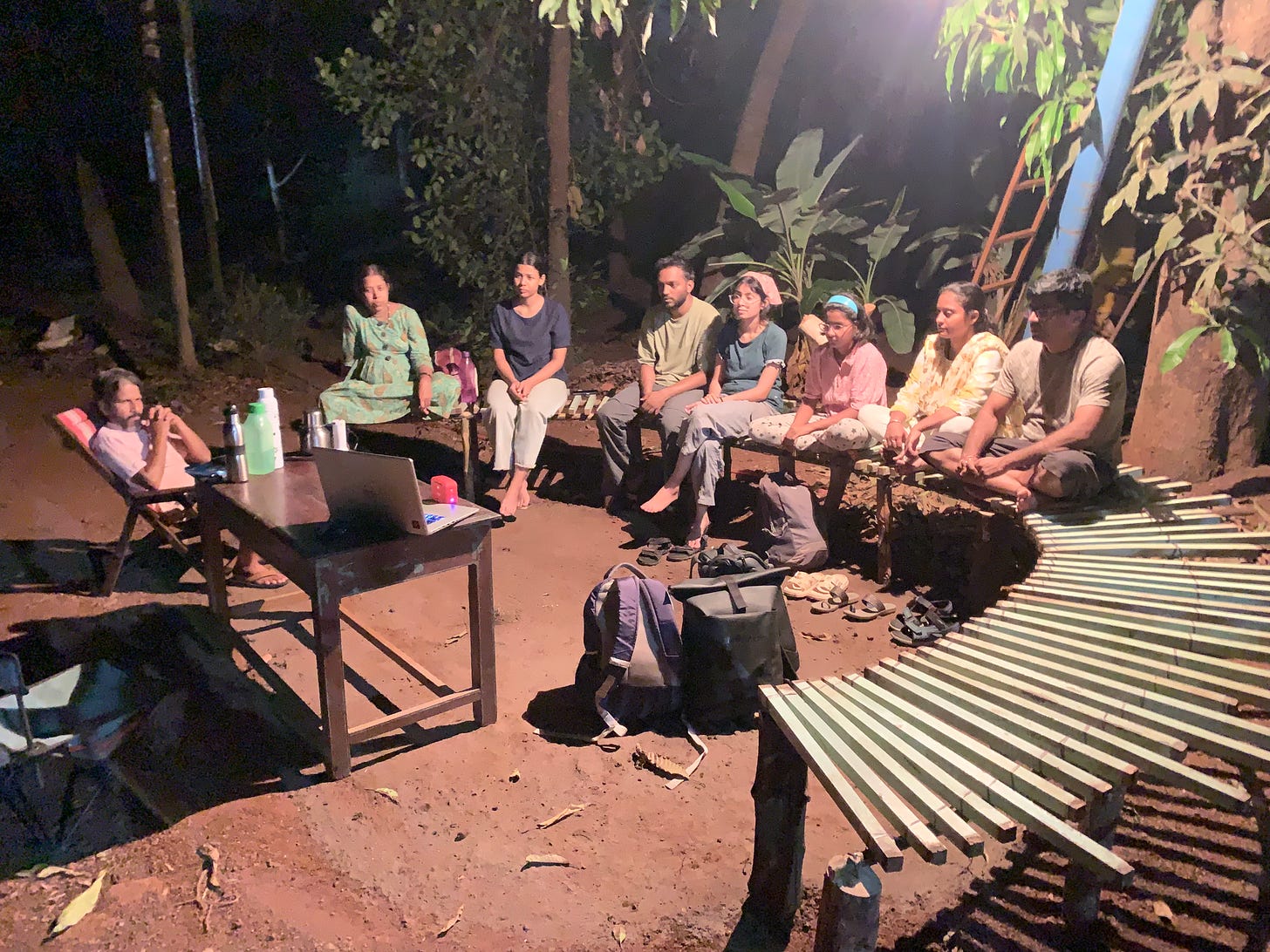The first time I used Instagram and Facebook on my phone, I was in a Physics class in Chiplun. The memory holds no particular drama, and you might ask, “what’s so remarkable about that?” The remarkability lies in the context: the Facebook and Instagram of that era were vastly different from the entities they have become today. The crucial question, then, is what fundamental shift has occurred?
For my generation, social media was a given; we grew up with it as a native language. My earliest memory is of WeChat, a Chinese app with a wonderfully romantic premise: you would compose a message, place it in a virtual bottle, and cast it into a digital sea, waiting for a stranger somewhere in the world to find it and begin a conversation. Instagram, in its infancy, was an elegant, uncomplicated photo-sharing application. It was never conceived to be the soul-corroding apparatus it has morphed into—a veritable menace to the collective psyche. Today, we are not merely sharing photographs; we are meticulously turning ourselves into the personas we construct on these platforms.
Our existence has become a serialized online narrative, and we are all actors playing our designated roles. This performance was, perhaps, always a part of reality, but we seem to have bypassed reality altogether, opting instead for the virtual domain. A pervasive restlessness now envelops us when we fail to document a moment—to capture it, frame it, and share it on our chosen platform. For some, the opiate is Instagram; for others, Facebook. For those who abstain from these two, the compulsion often manifests in the WhatsApp Status. We are no longer consumers of content; we have become the content itself. Our every move is marketed, choreographed, and delivered to an audience. Even our relationships are transformed into products for wider consumption. We now witness the rise of episodic life updates: a pre-wedding ceremony serves as a teaser trailer, followed by the “car reveal,” the pregnancy announcement, and so on. It is as if we are living for an audience that must be kept perpetually on its toes, lest they forget us. The need to be remembered, to be visible, has become the driving anxiety of our age.
I recall an old saying: if a person was absent from conversation for a long time, it was grimly assumed they might have passed away. Today, an absence from the digital feed implies a similar kind of social death. We are engaged in a constant, frantic broadcast to prove to others, and perhaps to ourselves, that we are, in fact, still alive
.
This commodification of the self is a treacherous act. In selling a version of ourselves, we create a static, curated mirage of a personality, one that is perpetually tethered to the image being projected. This fundamentally negates the concept of personal evolution. It allows no room for the messy, unpredictable nature of creativity and change. And change is the most crucial part of being human. Our ideas, opinions, and political viewpoints are in a constant state of transformation. For an online audience, however, this evolution is often seen as a betrayal, a disappointment. “This isn’t what we subscribed for,” they comment, and with each such remark, the burden on the creator grows. Imagine you are working on a project for the greater good of society; in inviting strangers into this process, you also invite a deluge of unwarranted criticism. We must not forget that many individuals, armed with nothing but a phone, harbor a reservoir of undirected anger. They have already fallen victim to this combative mentality. For them, your project ceases to be a creation and becomes merely a target—an object upon which they can project their own frustrations.
This phenomenon, I find, is more pronounced in the visual medium than the written one. Long-form writing, specifically, tends to invite more sincere criticism because it inherently filters for an audience with an attention span that exceeds a few fleeting moments. For those of you still reading this, I welcome you to the new economy where your attention span is the ultimate currency. Every one of these media platforms is engaged in a relentless war to capture and monetize it.
Whether you are a homemaker consuming content while managing a household, or a corporate professional collapsing on the sofa to entertain yourself and purge the mind of the day’s accumulated absurdities, the pattern is the same. We are watching other people live their lives. We stream their laughter, their tears, their broadcasted traumas. Their lived experience has become our ambient entertainment.
This act of watching others live becomes a peculiar form of outsourced existence. We delegate the messy, unpredictable business of living—the heartbreak, the triumph, the boredom—to digital proxies whose lives are edited into digestible narratives. In doing so, we risk developing a kind of emotional call-and-response system that is conditioned by the algorithm rather than by genuine human empathy. We learn the correct digital expressions for trauma (the heartfelt comment, the supportive emoji) without ever having to engage with the uncomfortable, unedited reality of another’s suffering. This creates a paradoxical state: we are more aware of the global spectrum of human experience than ever before, yet simultaneously more detached from the authentic, non-performative empathy required to truly connect with it. Our emotional landscape is flattened, curated into a feed where a friend’s devastating breakup story is given the same weight and screen space as an advertisement for a new pair of shoes.
The very architecture of this digital ecosystem is built on a foundation of manufactured desire and perpetual dissatisfaction. It operates as a Skinner box on a global scale, conditioning us with intermittent variable rewards—the unpredictable rush of a ‘like’, a comment, a share. This system is not designed to foster contentment; it is engineered to create a constant, low-grade yearning. Yearning for the life we see, the product we are shown, the validation we crave. This has a profound philosophical implication: it fundamentally reorients our relationship with the present moment. The present is no longer a state to be inhabited, but a resource to be mined for future content, a raw material to be polished and presented. This constant projection into a future moment of validation robs us of the very thing we seek to capture: a life genuinely lived.
Consequently, what begins to atrophy is our capacity for unmediated reality. We lose the muscle memory for boredom, for solitude, for the quiet, internal processing of thoughts that are not intended for an audience. Every moment of stillness becomes an opportunity for consumption or creation. This relentless externalisation of our inner monologue leaves little room for the formation of a stable, internal self. Our identity becomes a fluid, reactive entity, shaped not by deep reflection or core values, but by the aggregate response of an often-anonymous crowd. We become chameleons, adapting our colours to match the shifting background of online trends, terrified of being caught in a shade that is no longer in vogue. This is the great danger: not that we are creating a false image, but that we are forgetting how to have an original one at all.
I know many read this and press escape, but if you really like what I do, then please go on to support me by donating or buying me a coffee.
This ecosystem also fundamentally alters our perception of knowledge and expertise. The long, arduous path of acquiring deep understanding is replaced by the instantaneous performance of opinion. In a world where attention is the primary currency, a nuanced, complex argument is economically unviable compared to a definitive, inflammatory hot-take. This devalues genuine intellectual labour and creates a public sphere where the loudest and most confident voices are mistaken for the most knowledgeable. The algorithm, having no mechanism to differentiate between wisdom and certainty, rewards the latter. We are thus participants in a grand Dunning-Kruger experiment, where the platform itself elevates confident ignorance and buries thoughtful uncertainty, making us all less intelligent, more polarized, and increasingly hostile to the very idea of changing our minds.
And yet, within this meticulously engineered architecture of distraction, the seeds of hope lie not in a grand technological revolution, but in a quiet, personal rebellion. Hope is found in the deliberate act of choosing depth over breadth. It is the conscious decision to close the infinite scroll and open a finite book. It is the courage to have an experience—a meal, a conversation, a walk in the forest—and not photograph it, thereby reclaiming it for the private sanctuary of your own memory. Hope is nurtured in the small circles of real-world community, where conversation is unrecorded and empathy is unperformed. The system is designed to make us believe we are powerless, mere nodes in its network. But the ultimate currency is still our attention, and where we choose to spend it remains the most powerful act of defiance we possess. The path forward is not a mass exodus from the digital world, but a mass reclamation of the analog soul.
One more thing before you go..
…would you like to help me on the ground?
I have been actively engaged in creating an eco-village. It will be based on the models of agro-tourism, permaculture. The economy generated will help the people living in the village. Many from the younger generation have been leaving the village to the urban centres due to the lack of jobs.
What we did in the past three months is, we started conducting workshops, wherein some got paid for their guide skills, self-help women-led groups got paid for making food to the ones attending the workshop.
In these workshops we shared cultural learnings, we created a safe space for digital detox and we encouraged younger kids to experience nature. This gave a feeling in the village that saving nature can also be an economic model.
Now, as we move further, we will be focusing on education for the school kids, natural building methods to build shelters to accommodate sustainable tourism, and we will be working with the local youngsters to sponsor them and use their skills to create products that could get a market. A website is already underway!
We will need your help in building this project. If you have been witnessing my journey and have been reading this Substack for some while, I’d urge you to spend as little as $10, even that would be a lot of help. You can donate here. (For Indians, you can donate on this UPI id - 8983726737@ybl )
If you wish to donate more I’d hold personal zoom sessions with you to see how can we use your help.
It will help me build this eco-commune faster and the money will be used in getting solar lights and other necessary things to help the local rural community. This is the way you can directly help even when you are sitting oceans away from us.
Thanks, Ash.







“We are no longer consumers of content; we have become the content itself. Our every move is marketed, choreographed, and delivered to an audience. Even our relationships are transformed into products for wider consumption.”
Sad but true. Solution? Cant put this genie back in the bottle. Maybe it’s on us to say no and leave with what remains of our humanity.